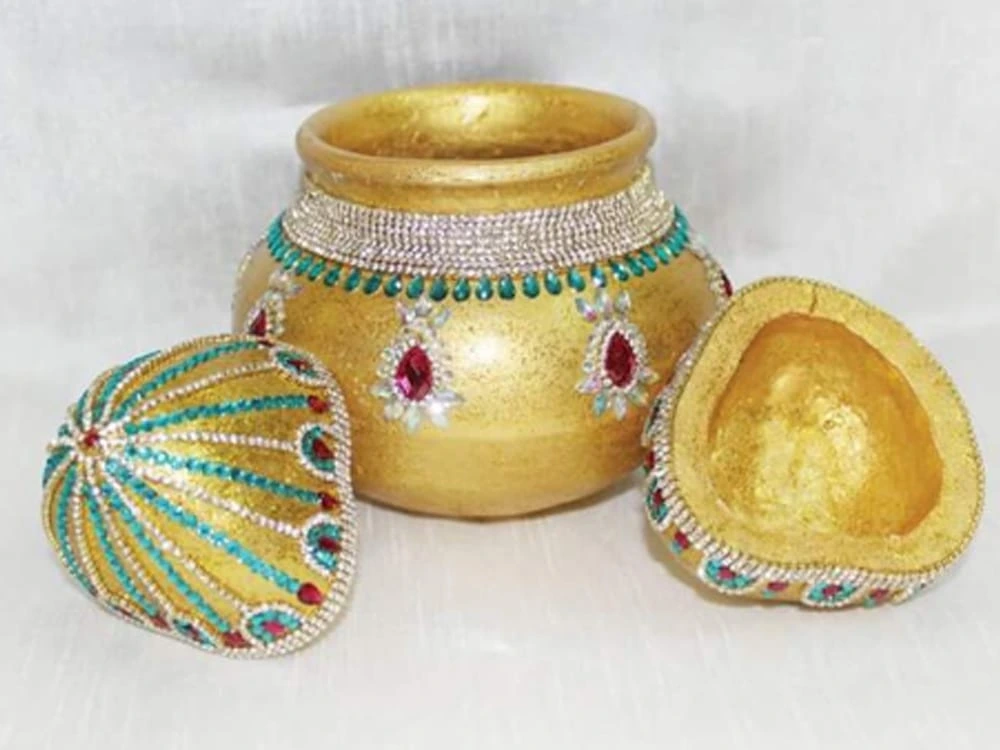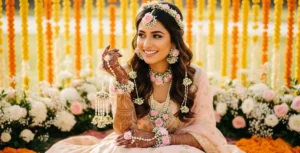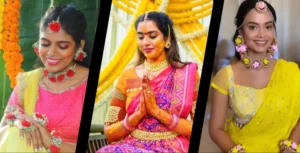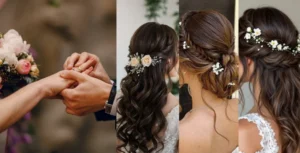South Indian weddings are renowned for their vibrant traditions and rich cultural significance. Among the many rituals that adorn these ceremonies, one stands out for its unique symbolism and decorative beauty – Kobbari Kudakalu’s.
This article explores the importance and decorative aspects of Kobbari Kudakalu in South Indian weddings, unraveling its deeper meanings and significance in the celebration of love and union.
The Significance of Kobbari Kudakalu
Kobbari Kudakalu’s, also known as coconut decorations, holds a special place in South Indian wedding rituals. “Kudakalu” is a word for ornamentation, while “Kobbari” is a word from the Telugu language. Respected for its fertility, prosperity, and cleanliness, the coconut is an essential part of many Indian cultural customs and is considered auspicious.
When it comes to weddings, Kobbari Kudakalu’s are thought to fend off evil spirits and represent the blessings of the almighty, guaranteeing a peaceful and successful married life for the newlyweds. The elaborate coconut decorations are a visual feast that add elegance and beauty to the wedding site.
Traditional Rituals and Customs
Deeply ingrained in South Indian culture, the Kobbari Kudakalu’s tradition incorporates regional variations in the decorating process. Coconuts, mango leaves, and brilliant flowers are used to make intricate designs in Andhra Pradesh and Telangana that capture the lively spirit of the occasion.
The bride and groom bathe themselves before the wedding ceremonies begin during the “Mangala Snanam,” or ceremonial bath, which emphasizes the ceremonial significance of Kobbari Kudakalu’s. The holy bath area is surrounded by carefully positioned coconuts decorated with kumkum and turmeric paste, which stand for auspiciousness and purity.
Decorative Elements and Designs

Intricate Craftsmanship:
The creation of Kobbari Kudakalu’s involves a painstaking process of intricate craftsmanship, where skilled artisans carve delicate patterns and designs onto the surface of coconuts. Each stroke of the artisan’s hand reflects years of tradition and expertise passed down through generations. The attention to detail is unparalleled, with every curve and contour meticulously shaped to perfection.
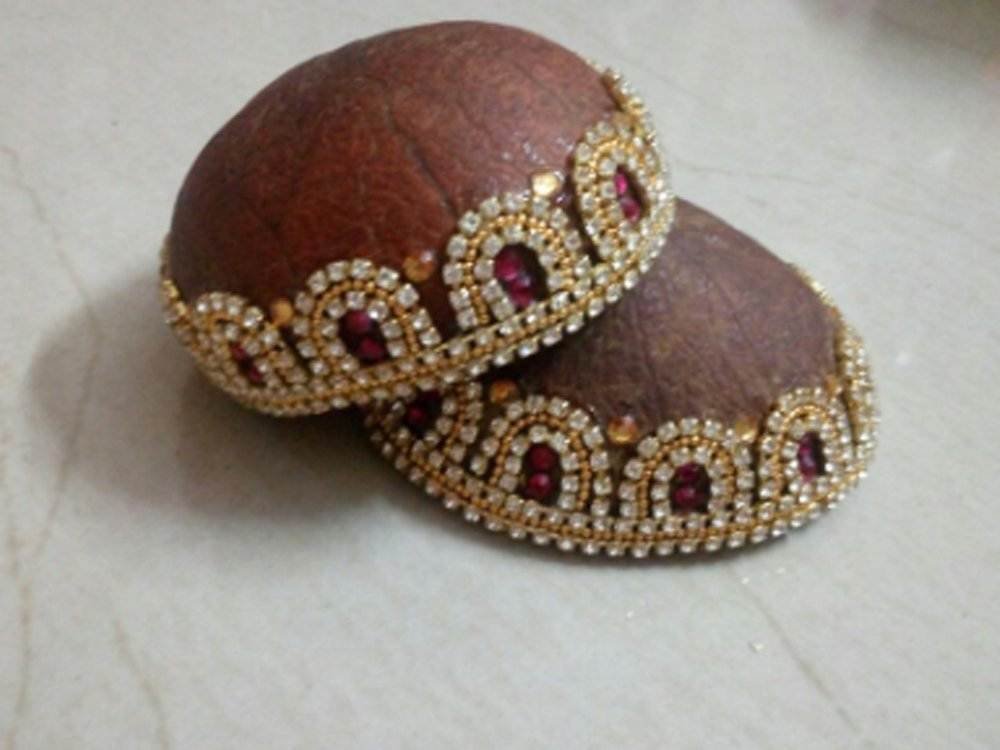
Vibrant Colors:
Coconuts, traditionally known for their natural brown hue, are transformed into vibrant works of art through the use of vivid colors. A rainbow of hues, ranging from deep reds and bright yellows to lush greens and royal blues, adorns the surface of the coconuts, creating a mesmerizing visual spectacle. These vibrant colors not only add energy and excitement to the decor but also symbolize the joy and celebration of the matrimonial union.
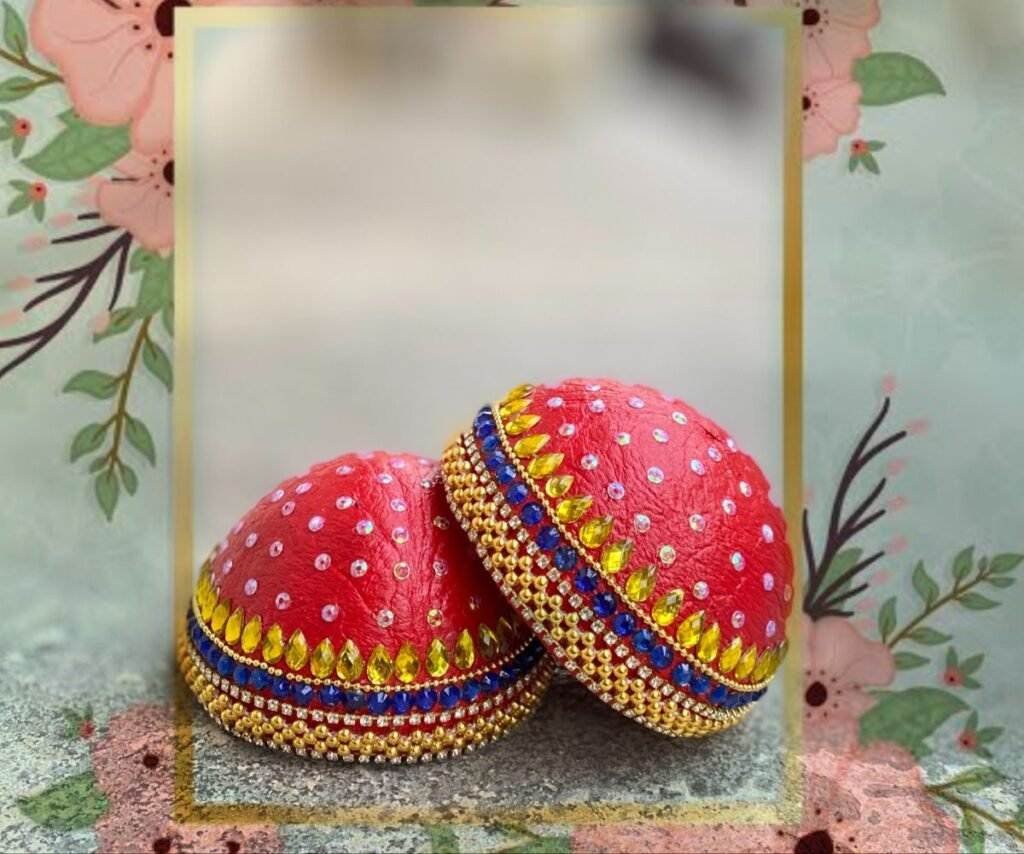
Floral Motifs:
Floral motifs are a staple feature of Kobbari Kudakalu’s, inspired by the natural beauty of blooming flowers that adorn the South Indian landscape. Delicate petals, graceful vines, and intricate blooms are meticulously carved onto the surface of coconuts, creating an enchanting tapestry of floral splendor.
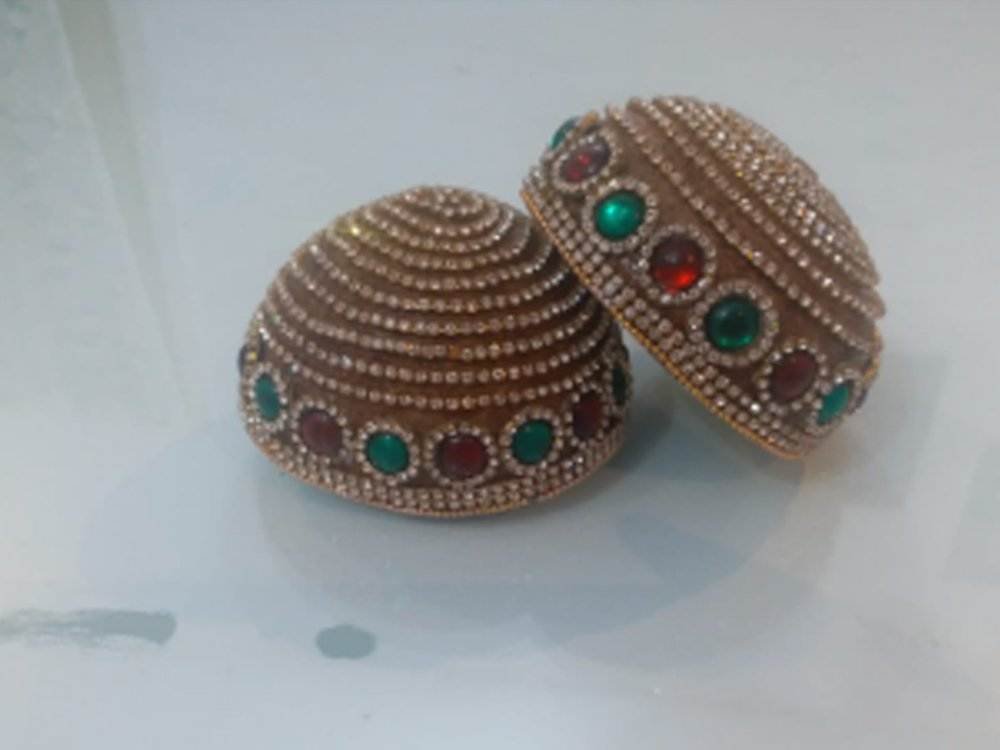
Traditional Symbols:
Embedded within the intricate designs of Kobbari Kudakalu’s are traditional symbols that hold profound cultural and spiritual significance. From auspicious symbols like the sacred “Om” to religious motifs such as the lotus flower and the peacock, each symbol carries deep-rooted meanings that resonate with the couple’s faith and beliefs.
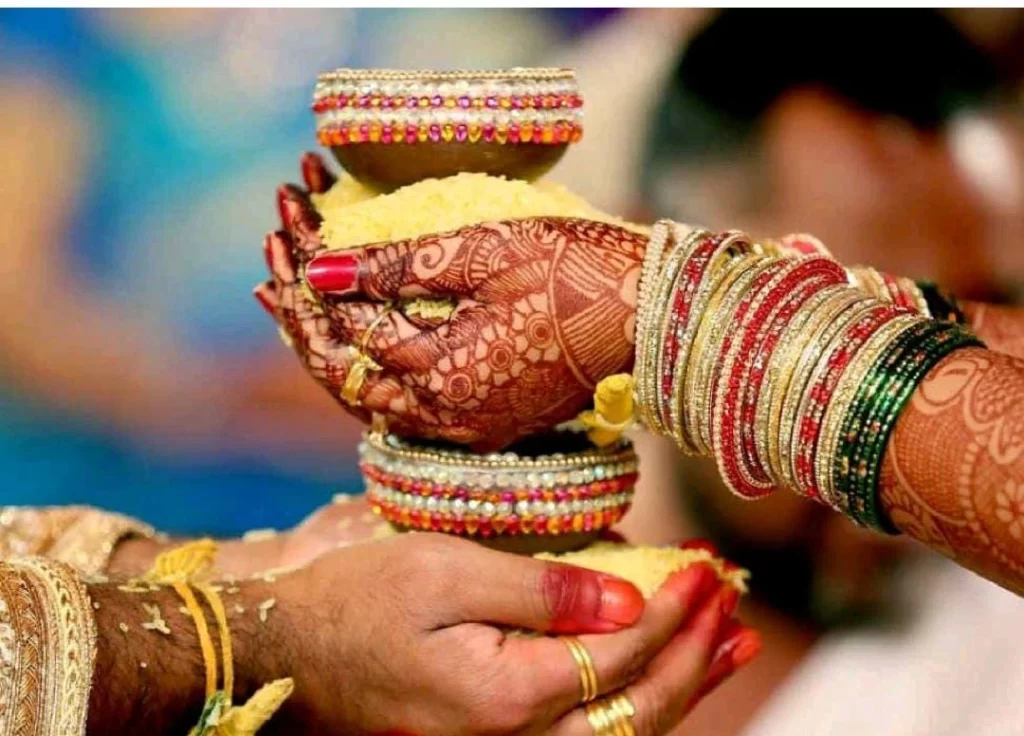
Personalization:
In recent years, there has been a growing trend towards personalized Kobbari Kudakalu’s designs that reflect the unique personalities and preferences of the couple. From custom monograms and initials to bespoke motifs and symbols, couples are incorporating elements that hold special meaning to them into their wedding decor.

The role of Kobbari Kudakalu’s in Wedding Ceremonies
In South Indian wedding ceremonies, Kobbari Kudakalu’s have a dual function as decorative elements and symbolic meanings. These elaborate works of art have deeper significance than just decoration, which enhances the marriage experience.
Kobbari Kudakalu’s play a significant role in a number of ceremonies during the wedding rituals, such as “Muhurtham,” “Saptapadi,” and “Mangala Snaanam.” The presence of these exquisitely decorated coconuts represents the couple’s heavenly blessings as they set off on their path to marital bliss.
In addition, Kobbari Kudakalu symbolize the affection and gifts that the newlyweds’ family and well-wishers have given them. A celebratory environment that perfectly captures the essence of the occasion is created by the exquisite craftsmanship and brilliant colors, which arouse feelings of joy and celebration.
Expanding on the regional variation
Although Kobbari Kudakalu’s is a common practice throughout South India, each location highlights its peculiarities and customs, which enhances the complexity and diversity of the wedding festivities.
- In the deeply rooted traditions of Andhra Pradesh and Telangana, Kobbari Kudakalu plays a crucial role in the wedding rituals. The wedding location is decorated with elaborate patterns that feature detailed carvings, vivid colors, and floral themes. This creates an aesthetically attractive atmosphere that honors the local cultural heritage.
- Coconut decorations, or “Thengai Thiruvizha,” are a common feature of traditional Tamil Nadu weddings. Here, coconuts are frequently decorated with elaborate designs influenced by Tamil art and culture, as well as traditional symbols like the “naga,” or serpent, which stands for fertility and protection.
- Kobbari Kudakalu, or coconut, milk, and fruit decorations, are referred to as “Thenga Palum Pazhamum” in Kerala, the country of coconuts. Coconuts are used extensively in ceremonies and rituals, and coconut palms are employed to decorate the wedding venue. Coconuts with intricate carvings, frequently adorned with gold and silver, are thought to be auspicious and are given and received as blessings between the families of the bride and groom.
- In Karnataka, coconut decorations are an essential part of the traditional “Mangalya Dharane” ceremony, where the bride and groom exchange garlands symbolizing their union. Coconuts adorned with betel leaves, flowers, and turmeric paste are used to decorate the wedding canopy, creating a sacred space for the nuptial vows to be exchanged.
Modern Adaptations
The usage of themed and personalized decorations that represent the couple’s interests and personality is one trend that has grown in favor in recent years. Couples are coming up with inventive methods to bring their individual styles into the traditional ceremony, such as incorporating custom-designed motifs or lavish floral arrangements.
Furthermore, couples are able to explore other materials and methods for making Kobbari Kudakalu’s because of technological breakthroughs. Although coconuts are still the customary choice, some couples choose more environmentally friendly options, including fiber or clay decorations, which lessen their impact on the environment without sacrificing the spirit of the ceremony.
Social media platforms like Instagram and Pinterest have also played a significant role in inspiring couples to explore new trends and ideas for wedding decorations. From DIY tutorials to professional services, couples have access to a wealth of resources to help them create memorable and Instagram-worthy Kobbari Kudakalu’s for their special day.
Conclusion
In conclusion, Kobbari Kudakalu’s embodies the essence of South Indian wedding ceremonies, blending tradition, symbolism, and aesthetic beauty into a harmonious celebration of love and union. From its humble origins as a simple coconut decoration to its evolution into an elaborate art form, Kobbari Kudakalu has stood the test of time, enriching wedding festivities with its cultural richness and spiritual significance.
FAQ
Can Kobbari Kudakalu be personalized to reflect the couple’s preferences?
Yes, Kobbari Kudakalu’s can be personalized to reflect the unique personalities and preferences of the couple. Couples can opt for custom designs, motifs, or symbols that hold special meaning to them, adding a personal touch to the decorations and making them truly one-of-a-kind.
How are Kobbari Kudakalu preserved and displayed during the wedding ceremony?
Kobbari Kudakalu’s are typically displayed prominently throughout the wedding venue, adorning ceremonial spaces such as the mandapam, entrance, and altar. After the wedding, they may be preserved as keepsakes or tokens of blessings exchanged between the families of the bride and groom, symbolizing the enduring bond of love and unity.
How are Kobbari Kudakalu created?
Kobbari Kudakalu’s are created through a meticulous process of intricate craftsmanship. Skilled artisans carve delicate patterns and designs onto the surface of coconuts, which are then embellished with vibrant colors and adorned with floral motifs and traditional symbols.

